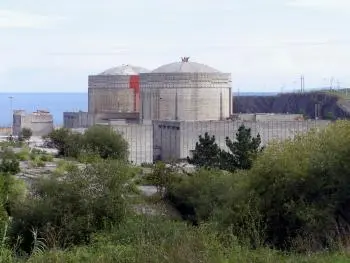
Nuclear moratorium is called the temporary suspension of the construction and start-up of nuclear power plants.
In 1983 in Spain a National Energy Plan was drawn up in which a nuclear moratorium was decreed in the country. The nuclear moratorium meant the blocking of 5 nuclear power plant projects of the 7 that had been approved. Technically, it meant a brake on the dynamics of the development of nuclear energy in the country.
What caused the nuclear moratorium in Spain?
There are several reasons that motivated the creation of the nuclear moratorium:
-
Technical reasons.
-
Reasons derived from the demand for electricity.
-
Social opposition. Popular opposition to nuclear energy, especially in Extremadura and the Basque Country.
What did the Spanish nuclear moratorium consist of?
In 1983 a National Energy Plan was drawn up in which nuclear energy in Spain was severely affected. The will of the Felipe González government was to develop a plan to adapt national electricity production to energy demand and adjust prices.
In June 1984, the Congress of Deputies approved the 1983 National Energy Plan (PEN-83). The nuclear shutdown was the main novelty of PEN-83, which consisted in the slowdown in the nuclear power plant construction program.
At that time there were 7 nuclear power plants that had authorization for their construction:
-
The Lemóniz I-II nuclear power plant
-
The Valdecaballeros I-II nuclear power plants
-
The Trillo I-II nuclear power plants
-
The Vandellós II nuclear power plant.
When developing PEN-83, it was considered necessary to readapt the current nuclear energy program to select only two nuclear power plants out of the seven that had authorization.
The plants chosen were the Trillo I nuclear power plants and the Vandellós II nuclear power plant.
Technical implications of the nuclear moratorium
On the date the nuclear moratorium was approved, some of the projects had already started, so it was necessary to plan conservation strategies for what was built at that time.
In the two groups of Lemóniz, the conservation of the construction was maintained until the date of the moratorium. In the two groups of Valdecaballeros, only maintenance tasks will be carried out by carrying out a Shutdown Plan foreseen in the PEN-83.
Construction on the Trillo II nuclear power plant had not yet started.
Economic consequences of the nuclear moratorium
From the economic point of view, the investment of the groups that owns the nuclear power plants that were blocked had already been made. To compensate for the losses, by order of the Ministry of Industry, in October 1983, a percentage of the electricity tariff was established that would be used to meet these obligations.
The increase in electricity bills ended in October 2015. According to the National Markets and Competition Commission (CNMC), the Spanish have paid a total of 5,717 million euros to banks and electricity companies.
The legal obligation of the moratorium was also included in the 1991 National Energy Plan (PEN-91). This plan established a series of forecasts of the demand for electricity and bet on fossil fuels and renewable energies.
The solution to the problem of the nuclear moratorium would come with the approval of the Law of Ordination of the National Electric System (LOSEN) of 1994. This legal provision only affected certain nuclear power plants and established economic compensation. For this, the electricity companies could deduct a percentage of the electricity tariff.
In December 1996, the Government and the electricity companies signed the Protocol for the establishment of a new regulation of the National Electric System. The result was the 1997 Electricity Sector Law, which introduced major changes to the current system.
This new law supposed a complete liberalization of the electric power production activity, so that the construction of nuclear power plants would only be subject to the prior administrative authorization regime.
Compensation of projects permanently paralyzed
The Ministerial Order of the Ministry of Economy of June 1996 established a Fund for the Securitization of Assets Resulting from the Nuclear Moratorium. This fund was established as the sole transferee of the entire right of compensation recognized to the electricity companies that own the construction projects of the Lemóniz, Valdecaballeros and Trillo II nuclear power plants.
The annuality corresponding to 2000 and the amount pending compensation were established according to the Resolution of January 15, 2001 of the General Directorate of Energy Policy and Mines.
To determine the amount pending compensation on December 31 of each year, a prior audit of each project is carried out separately.